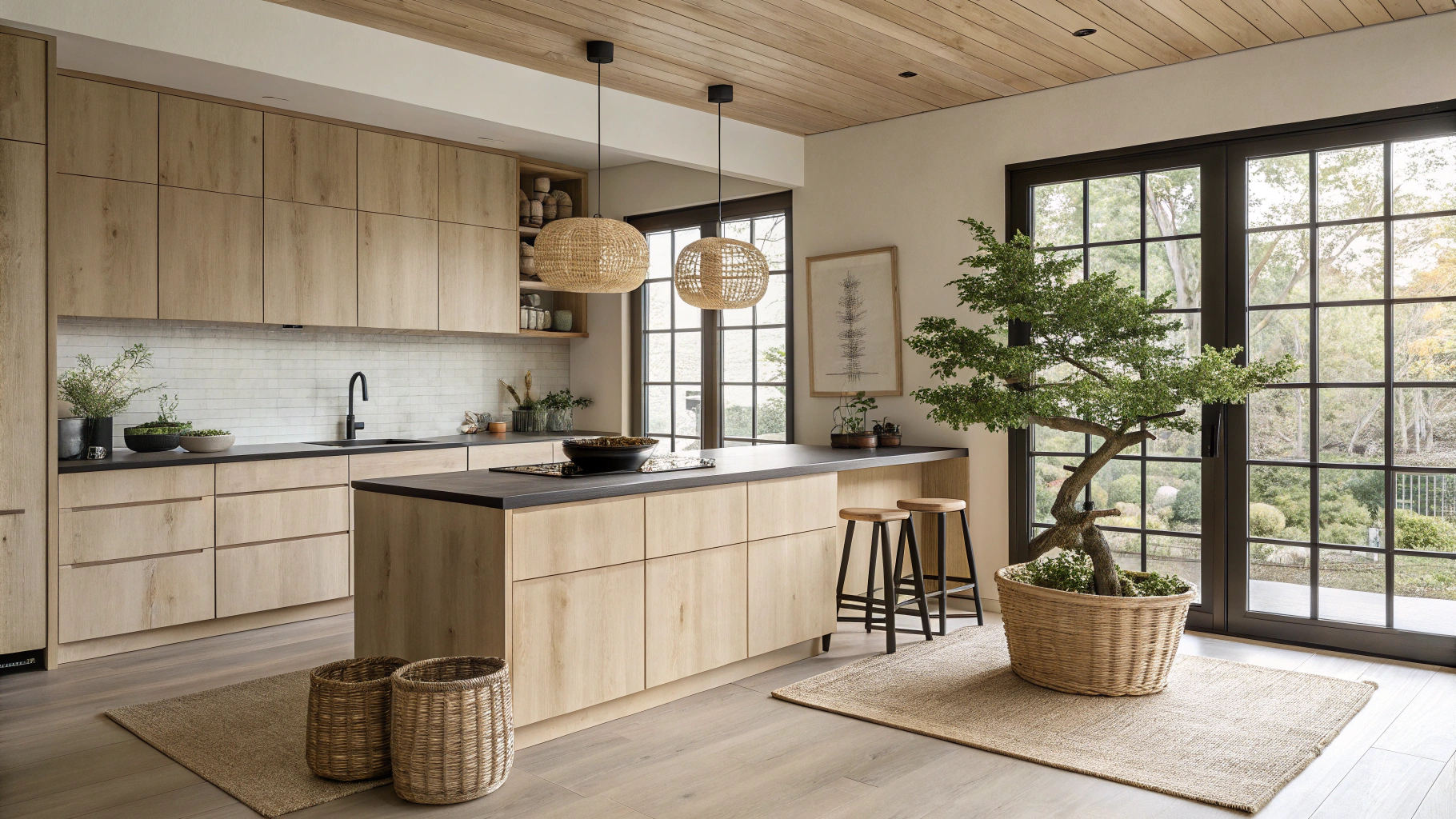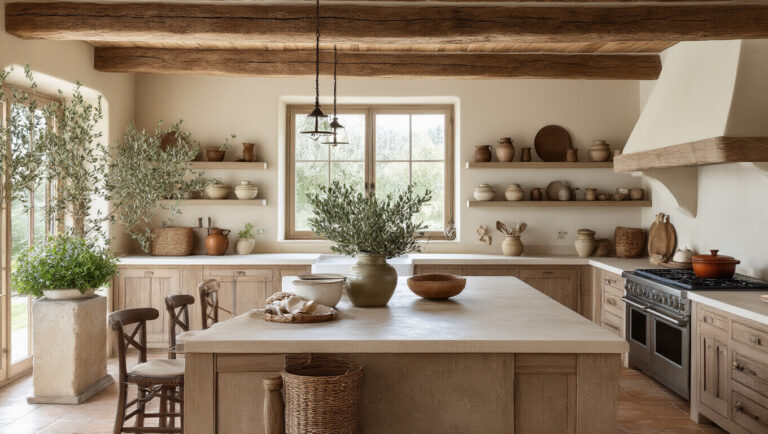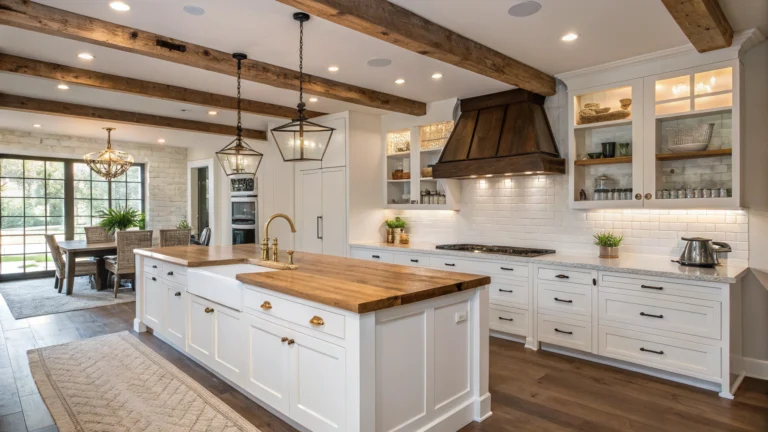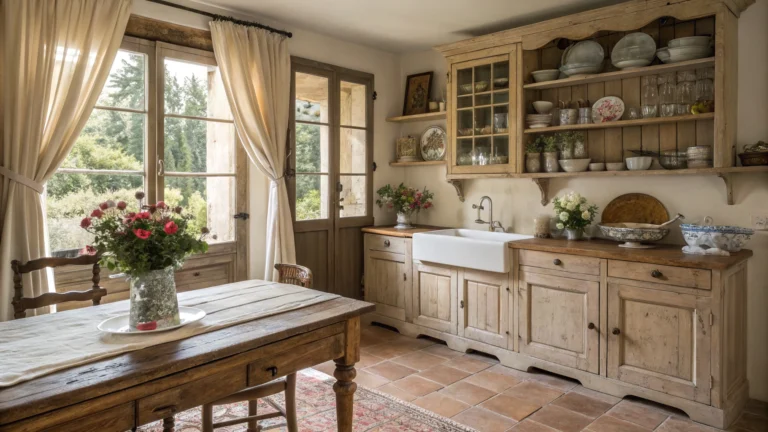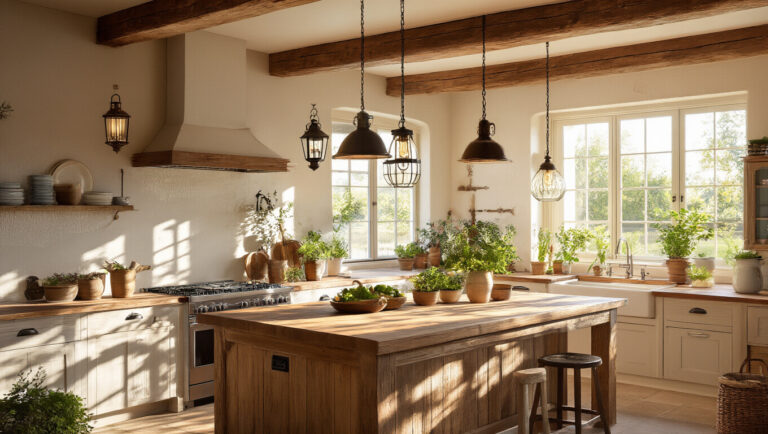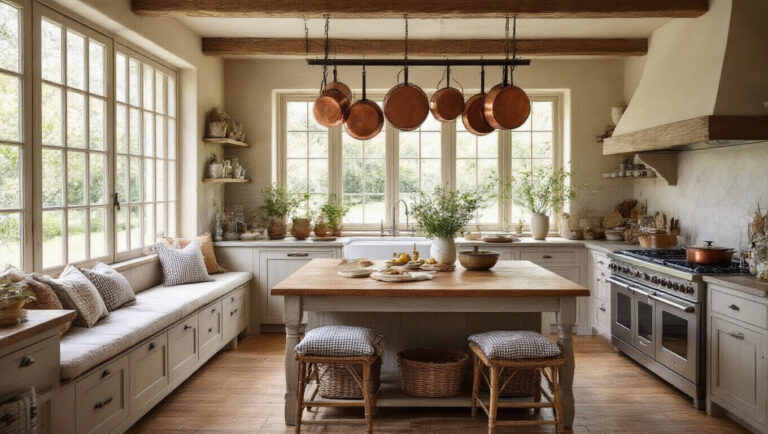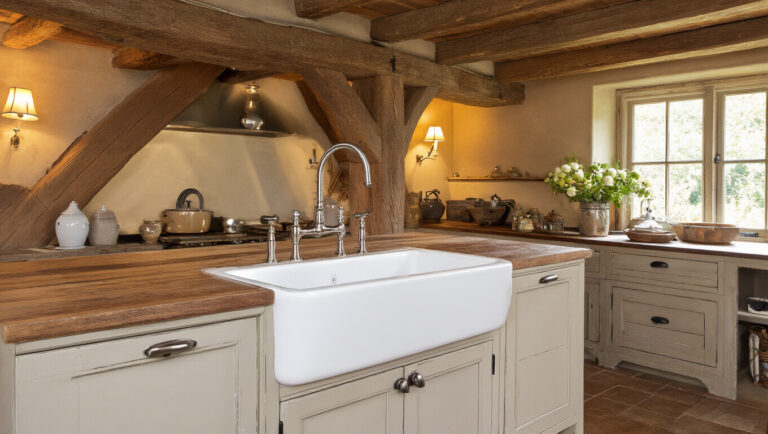Japandi Interior Design Kitchen: Effortless Minimalist Designs
Hey there, design enthusiast! Ever walked into a kitchen and felt an instant sense of calm? That’s the magic of Japandi interior design kitchen. It’s like the lovechild of Scandinavian simplicity and Japanese minimalism—think clean lines, natural materials, and a vibe that says, ‘I’ve got my life together.’
Whether you’re renovating your current space or starting from scratch, Japandi kitchen design offers a perfect blend of functionality and aesthetics. It’s not just about looking good; it’s about creating a space that feels good too.
So, grab a cup of tea (or coffee, no judgment here), and let’s dive into the world of Japandi kitchen room design. By the end of this article, you’ll be ready to transform your kitchen into a serene, stylish haven that’s as practical as it is beautiful.
The Essence of Japandi Kitchen Design

So, what exactly is Japandi kitchen design? Imagine the cozy, functional vibes of a Scandi kitchen meeting the zen-like simplicity of Japanese home interiors. The result? A space that’s both warm and minimalist. Japandi design is all about balance—balancing light and dark, natural and man-made, form and function. It’s like the Goldilocks of kitchen designs: not too cluttered, not too sparse, but just right. The key elements include natural materials like wood and stone, a neutral color palette, and a focus on craftsmanship. It’s about creating a kitchen that feels inviting yet uncluttered, where every item has a purpose and a place.
One of the standout features of Japandi kitchen design is its emphasis on natural light. Large windows, open shelving, and reflective surfaces help to maximize the light, making the space feel airy and open. The color palettes are typically muted—think soft whites, warm grays, and earthy tones. But don’t be afraid to add a pop of color here and there, like a deep green or a muted blue, to keep things interesting. The goal is to create a kitchen that’s not only beautiful but also functional. After all, a kitchen is where the magic happens—where meals are prepared, conversations are had, and memories are made. So, why not make it a space that inspires and uplifts?
Choosing the Right Color Palettes for Your Japandi Kitchen

When it comes to Japandi kitchen design, color palettes play a crucial role. The idea is to create a space that feels calm and harmonious, so you’ll want to stick to a neutral, earthy palette. Think soft whites, warm grays, and natural wood tones. These colors create a sense of warmth and tranquility, making your kitchen a place where you actually want to spend time. But don’t worry, a neutral palette doesn’t have to be boring. You can add depth and interest by incorporating different textures and materials, like a matte black faucet or a woven rug.
If you’re feeling a bit adventurous, you can also add a pop of color to your Japandi kitchen. Just keep it subtle—think muted greens, blues, or even a soft blush pink. These colors can be introduced through accessories like tea towels, dishware, or even a statement piece of furniture. The key is to keep the overall look cohesive and balanced. Remember, Japandi design is all about simplicity and harmony, so less is definitely more. And don’t forget about the power of natural light! It can transform your kitchen, making it feel brighter and more spacious. So, when choosing your color palettes, consider how the light will interact with the colors throughout the day.
Maximizing Space with Japandi Kitchen Room Design
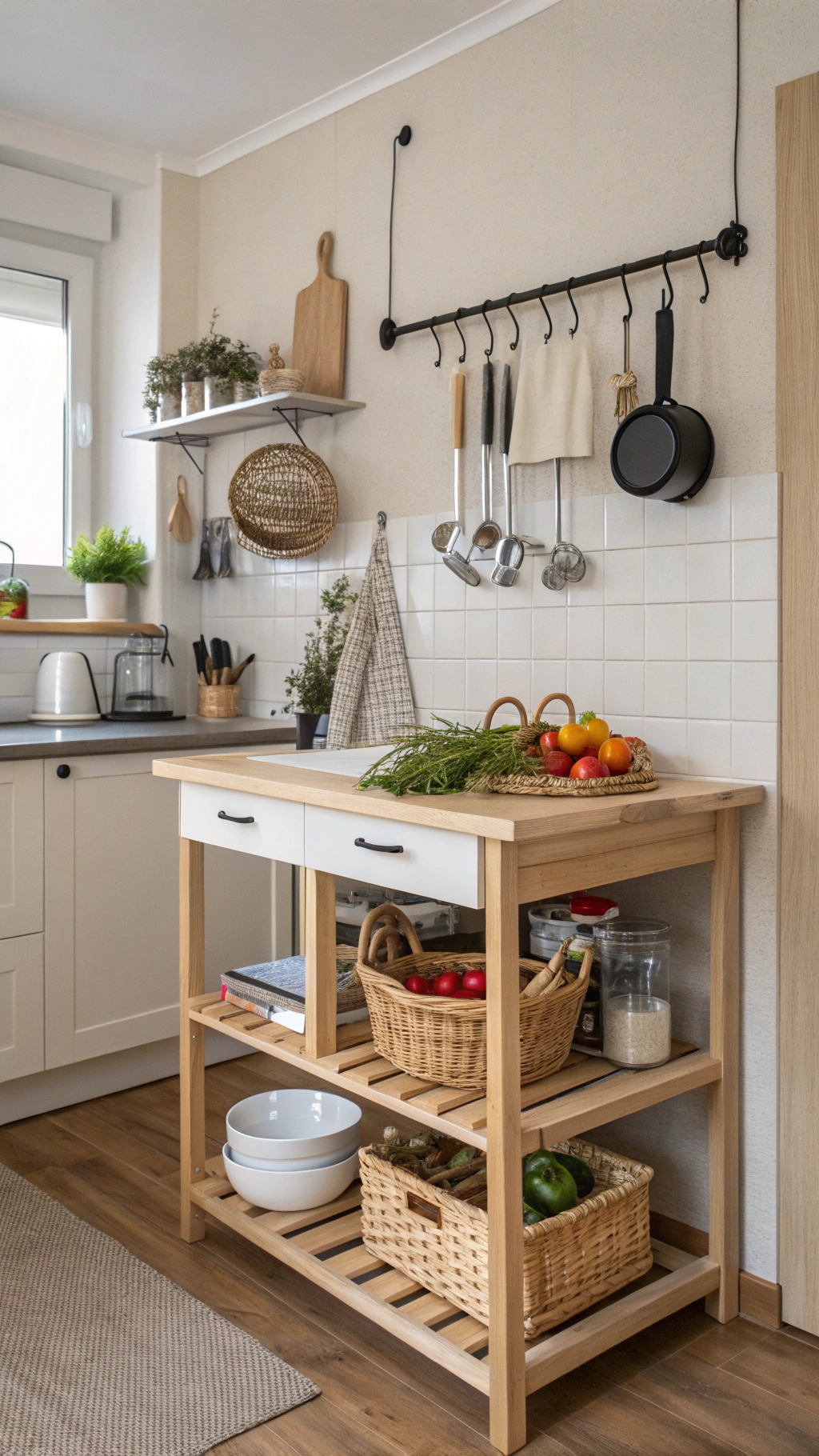
One of the hallmarks of Japandi kitchen design is its focus on functionality. This is especially important in smaller spaces, where every inch counts. The goal is to create a kitchen that’s not only beautiful but also practical and efficient. Start by decluttering and getting rid of anything you don’t need. Japandi design is all about simplicity, so keep only the essentials. Next, think about storage. Open shelving is a great option for a Japandi kitchen—it keeps things accessible and adds to the minimalist aesthetic. Just make sure to keep the shelves organized and clutter-free.
Another way to maximize space in your Japandi kitchen is to use multi-functional furniture. For example, a kitchen island with built-in storage can serve as both a prep area and a place to store pots and pans. You can also use hooks or racks to hang utensils or pots, freeing up valuable counter space. And don’t forget about vertical space! Wall-mounted shelves or cabinets can help you make the most of your kitchen’s height. The key is to keep everything organized and within reach, so your kitchen is as functional as it is beautiful. After all, a well-designed kitchen is one that works for you, not against you.
Incorporating Natural Materials in Your Japandi Kitchen
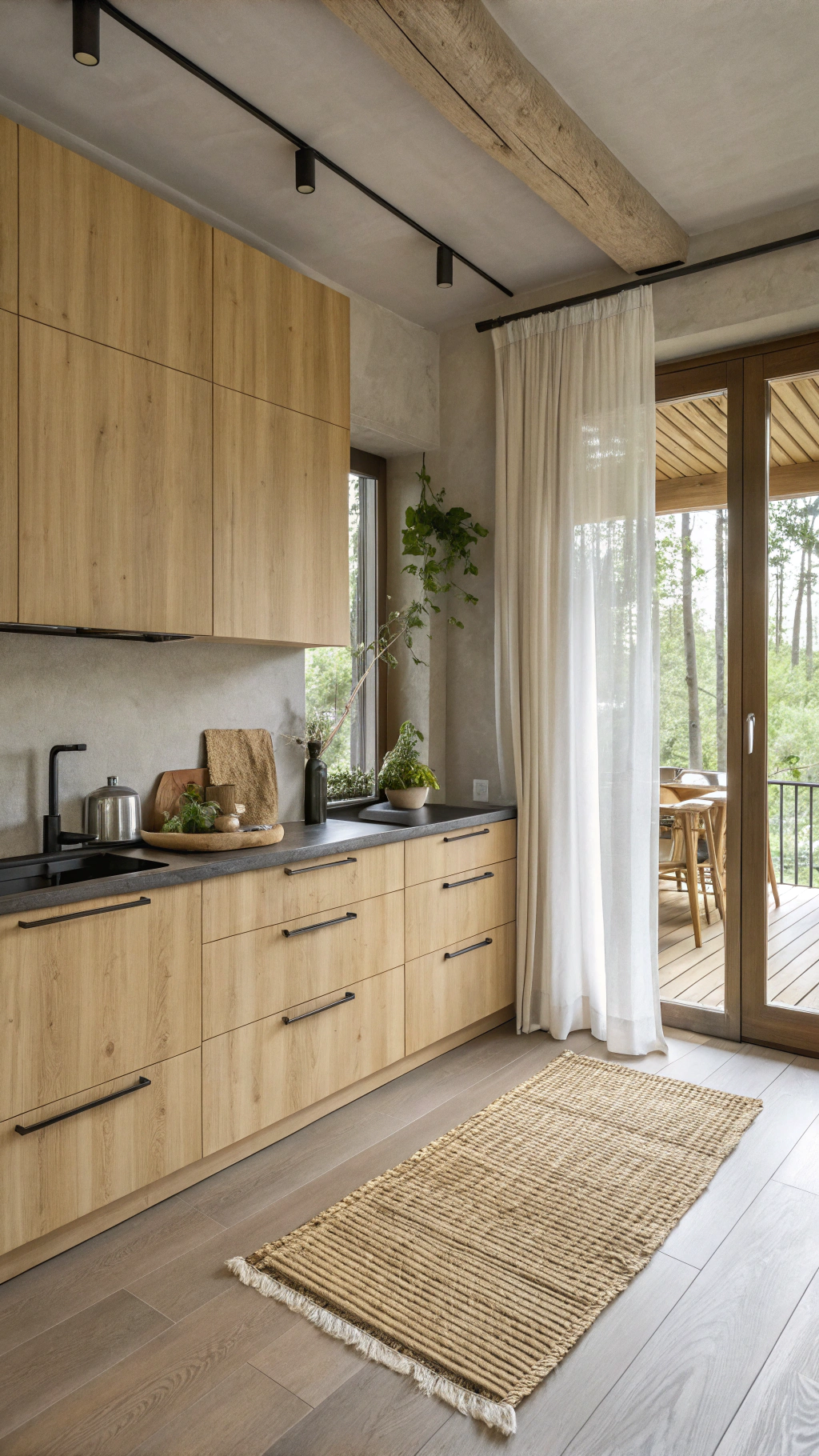
Natural materials are a cornerstone of Japandi kitchen design. They bring warmth and texture to the space, creating a sense of harmony and balance. Wood is a popular choice for cabinetry, countertops, and flooring. Opt for light, natural wood tones like oak or birch to keep the space feeling airy and open. Stone is another great option for countertops or backsplashes—it’s durable, timeless, and adds a touch of luxury. And don’t forget about other natural materials like bamboo, rattan, and linen. These can be used for accessories like rugs, curtains, or even dishware.
When incorporating natural materials into your Japandi kitchen, it’s important to keep the overall look cohesive. Stick to a limited palette of materials and colors to create a sense of unity. For example, if you’re using wood for your cabinetry, consider using the same wood for your open shelving or countertops. This creates a seamless look that’s both elegant and understated. And don’t be afraid to mix and match textures—a smooth stone countertop paired with a rough-hewn wooden table can add depth and interest to the space. The key is to keep it simple and let the natural beauty of the materials shine through.
The Role of Lighting in Japandi Kitchen Design
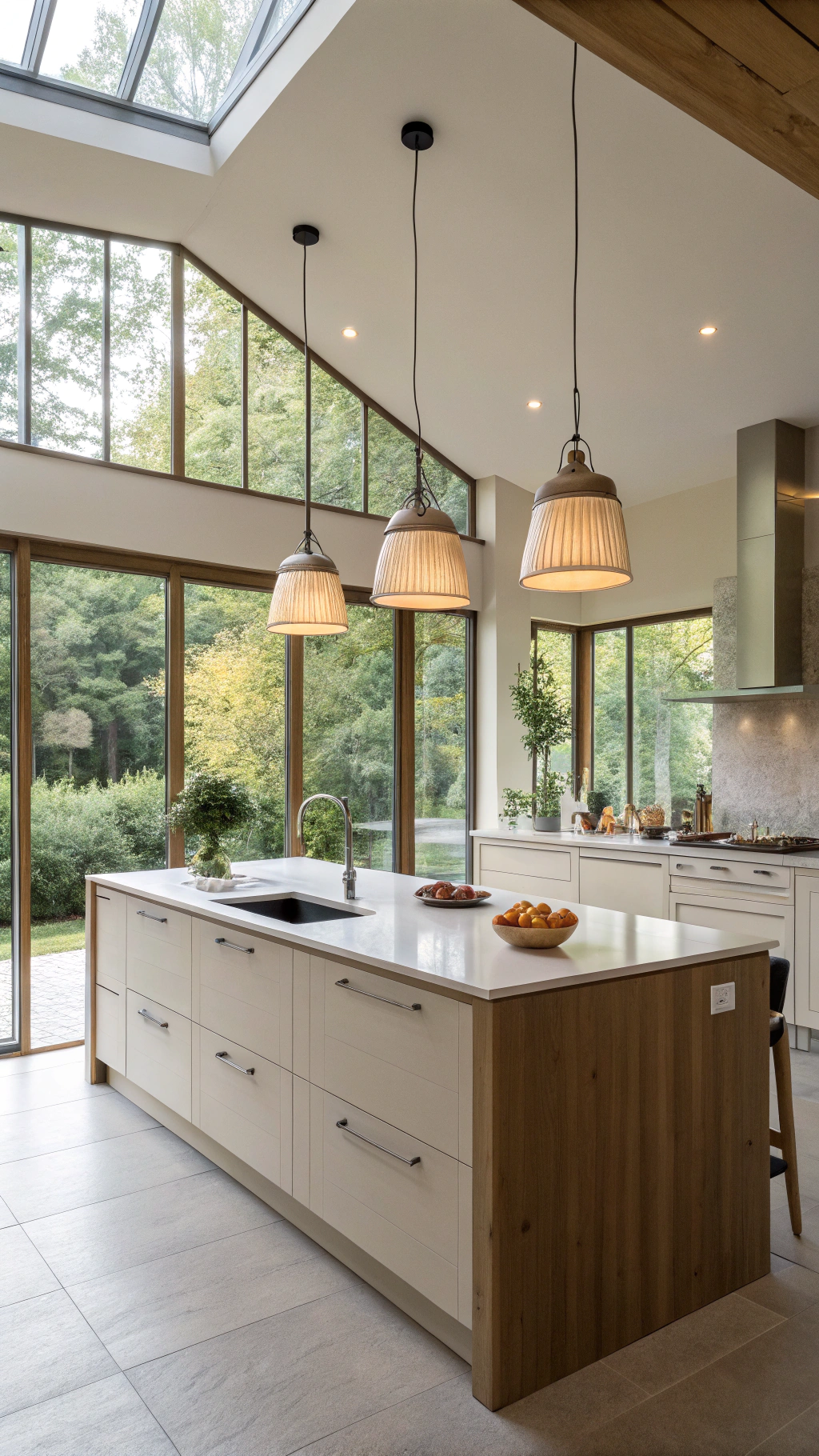
Lighting is a crucial element in any kitchen, but it’s especially important in a Japandi kitchen. The goal is to create a space that feels bright, airy, and inviting. Natural light is your best friend here, so make the most of it. Large windows, skylights, and glass doors can help flood the space with light, making it feel larger and more open. If you’re working with a smaller space, consider using reflective surfaces like glossy tiles or stainless steel to bounce light around the room.
When it comes to artificial lighting, keep it simple and functional. Pendant lights are a great option for a Japandi kitchen—they provide focused task lighting and add a touch of style. Opt for designs that are sleek and minimalist, like matte black or brass fixtures. You can also use under-cabinet lighting to illuminate your countertops and make food prep easier. And don’t forget about ambient lighting! A few well-placed floor or table lamps can create a cozy, inviting atmosphere. The key is to layer your lighting, so you have a mix of task, ambient, and accent lighting to suit different needs and moods.
Creating a Minimalist Japandi Kitchen with Kabinet Dapur
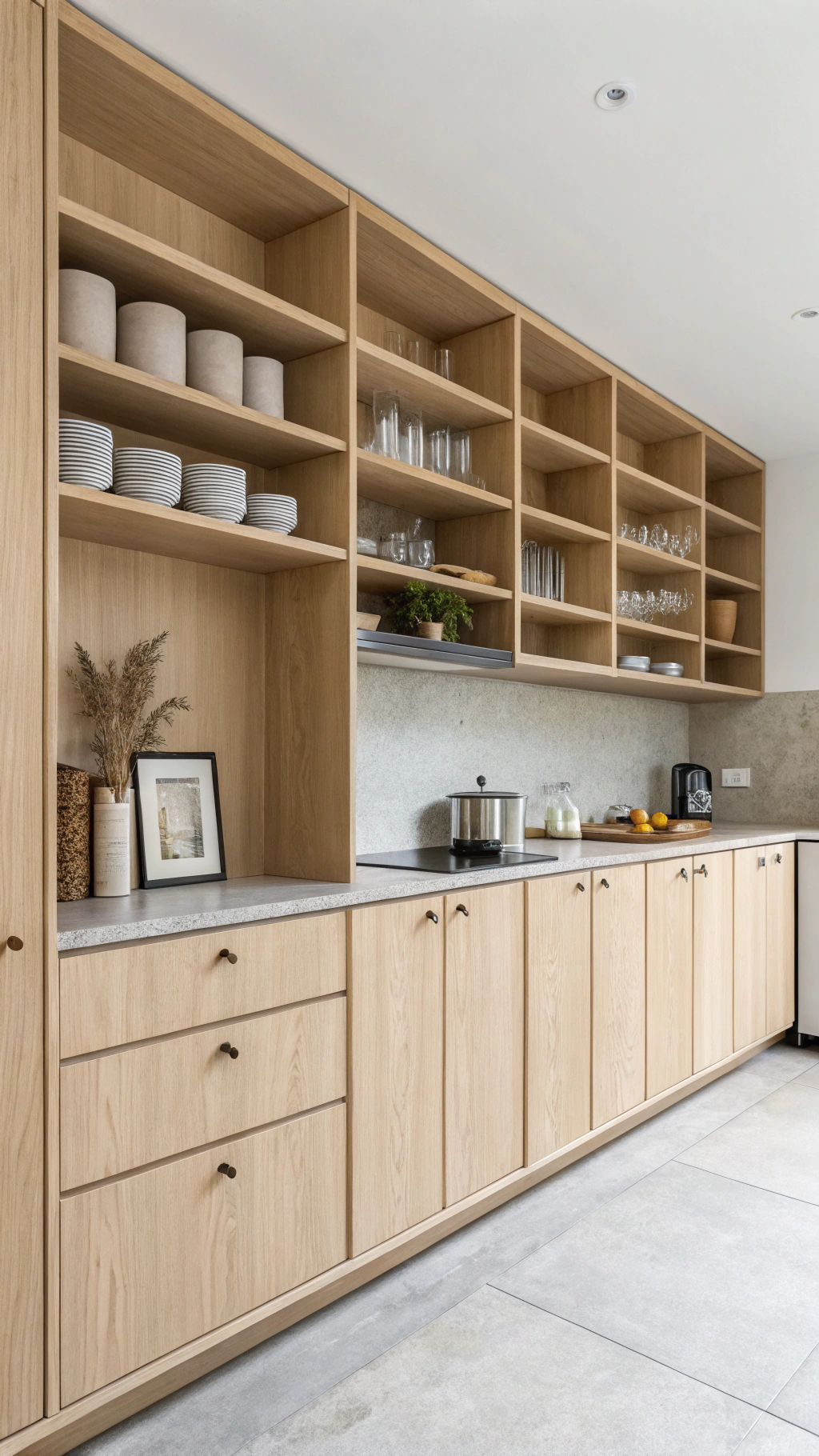
If you’re looking to create a minimalist Japandi kitchen, your kabinet dapur (kitchen cabinets) are a great place to start. The key is to keep them simple and functional. Opt for clean lines and a neutral color palette—think light wood or matte white. Avoid ornate details or overly complicated designs; instead, focus on craftsmanship and quality. Open shelving is another great option for a minimalist Japandi kitchen. It keeps things accessible and adds to the overall aesthetic. Just make sure to keep the shelves organized and clutter-free.
When designing your kabinet dapur, think about how you use your kitchen. What do you need to store? How can you make it as efficient as possible? Consider incorporating pull-out drawers, lazy Susans, or other organizational tools to maximize space and keep everything within reach. And don’t forget about the hardware! Simple, understated handles or knobs can add a touch of elegance without overwhelming the design. The goal is to create a kitchen that’s not only beautiful but also functional and easy to use. After all, a well-designed kitchen is one that works for you, not against you.
Adding Personal Touches to Your Japandi Kitchen
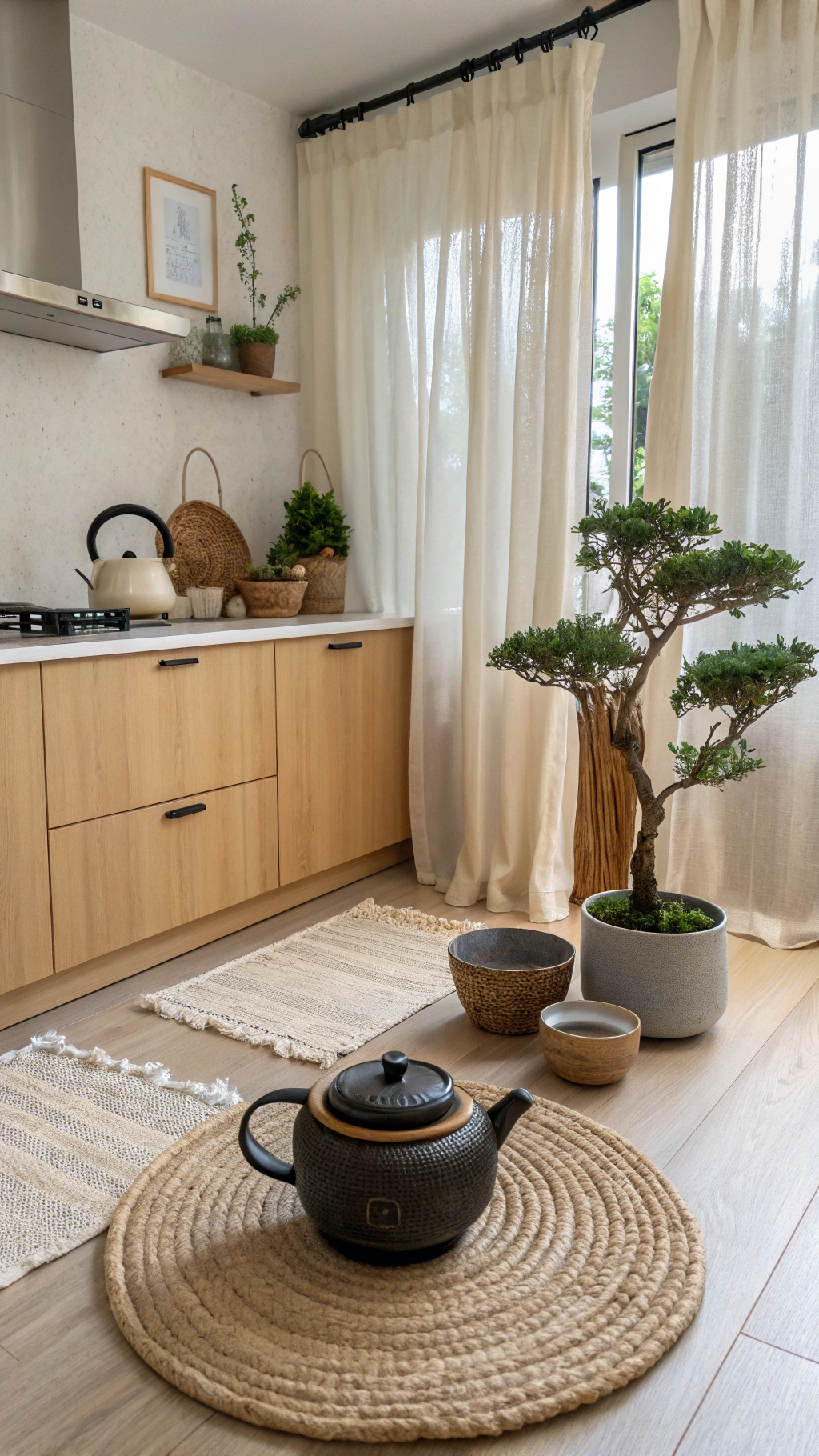
While Japandi design is all about simplicity and minimalism, that doesn’t mean your kitchen has to be devoid of personality. In fact, adding a few personal touches can make the space feel more inviting and unique. Start with accessories—things like a beautiful teapot, a set of handmade bowls, or a piece of art can add character without overwhelming the design. Plants are another great way to add life and color to your Japandi kitchen. Opt for low-maintenance options like succulents or a small bonsai tree.
Another way to add personal touches is through textiles. A woven rug, linen curtains, or even a set of tea towels can add texture and warmth to the space. And don’t forget about the power of scent! A small diffuser or a bowl of fresh herbs can make your kitchen feel more inviting. The key is to keep it simple and intentional. Choose items that you love and that add to the overall aesthetic of the space. After all, your kitchen should be a reflection of you—a place where you feel comfortable and inspired.
Blending Scandi Kitchen and Japanese Elements
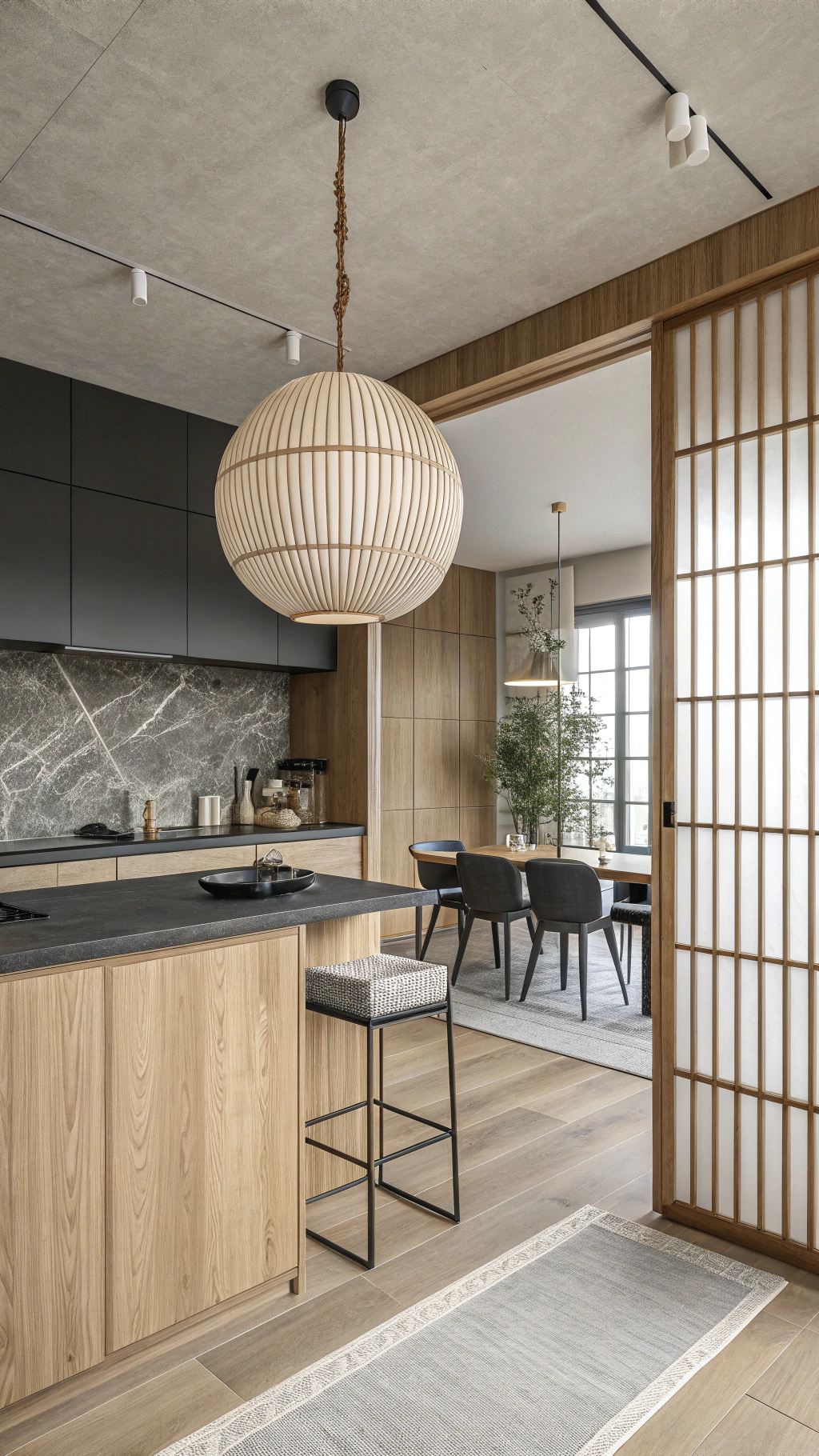
The beauty of Japandi kitchen design lies in its ability to blend the best of both worlds—Scandinavian simplicity and Japanese minimalism. To achieve this, start by focusing on the commonalities between the two styles. Both emphasize natural materials, clean lines, and a neutral color palette. So, think light wood, stone, and muted colors. But don’t be afraid to incorporate elements that are unique to each style. For example, you could add a Scandinavian-style pendant light or a Japanese-inspired shoji screen.
Another way to blend Scandi kitchen and Japanese elements is through the use of texture. Scandinavian design often incorporates cozy textiles like wool or sheepskin, while Japanese design favors natural materials like bamboo or rattan. By combining these textures, you can create a space that’s both warm and minimalist. And don’t forget about the importance of craftsmanship. Both styles value quality and attention to detail, so choose pieces that are well-made and timeless. The goal is to create a kitchen that’s not only beautiful but also functional and harmonious.
Practical Tips for Maintaining a Japandi Kitchen
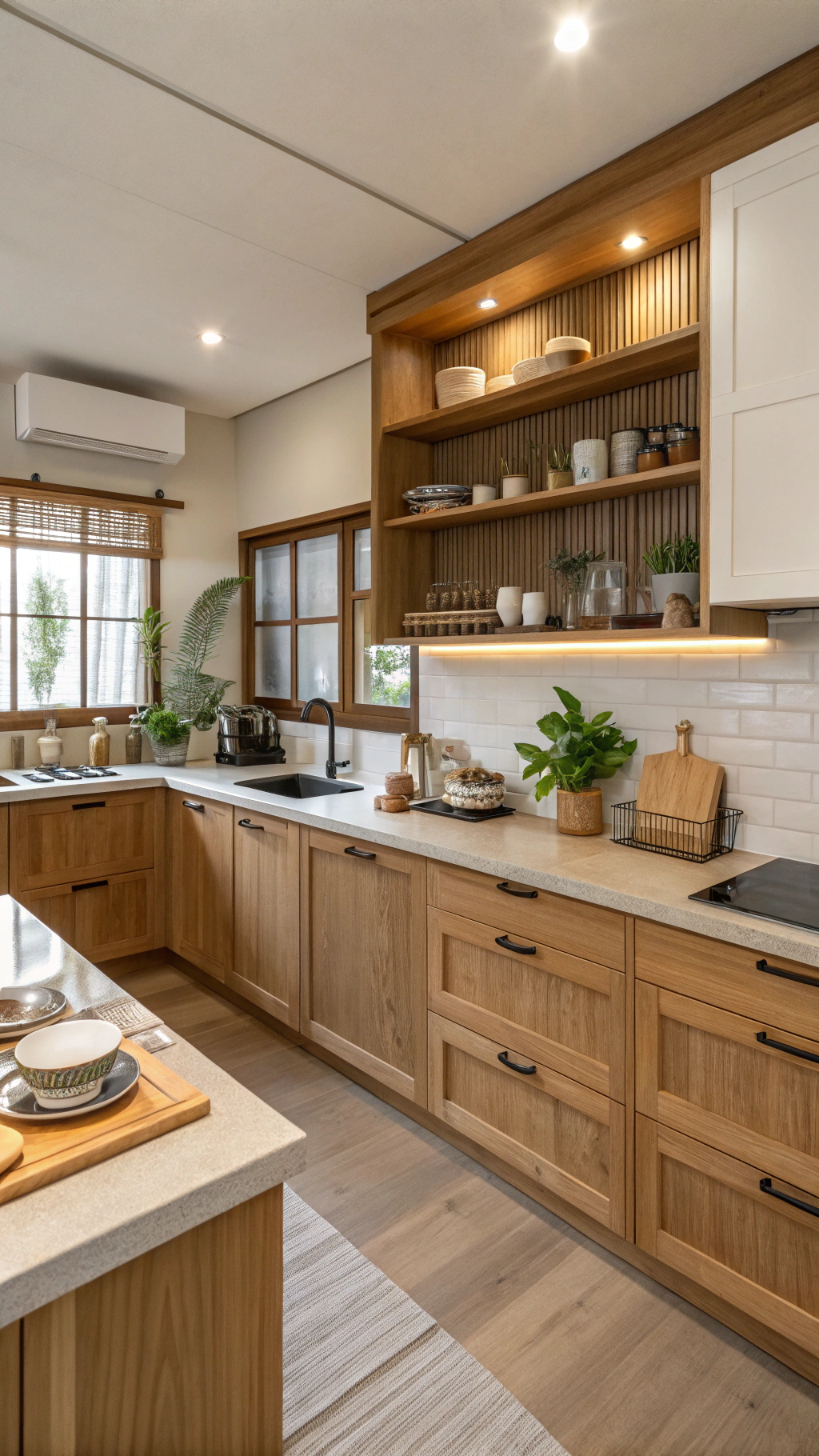
So, you’ve created your dream Japandi kitchen—now how do you keep it looking its best? The key is to maintain the principles of simplicity and minimalism. Start by decluttering regularly. Keep only the essentials and find a place for everything. This will help keep your kitchen organized and clutter-free. Next, focus on cleaning. Japandi design is all about clean lines and natural materials, so it’s important to keep everything looking fresh and polished. Use natural cleaning products to maintain the integrity of your materials.
Another tip is to rotate your accessories. While Japandi design is minimalist, that doesn’t mean you can’t switch things up from time to time. Rotate your dishware, textiles, or even your plants to keep the space feeling fresh and new. And don’t forget about maintenance. Natural materials like wood and stone require a bit of care to keep them looking their best. Regularly oil your wood surfaces and seal your stone countertops to protect them from wear and tear. The goal is to create a kitchen that’s not only beautiful but also easy to maintain and enjoy.
Why Japandi Kitchen Design is Perfect for Modern Home Interiors

In today’s fast-paced world, our homes have become more than just places to live—they’re sanctuaries where we can relax and recharge. That’s why Japandi kitchen design is perfect for modern home interiors. It’s a style that’s both functional and beautiful, creating a space that’s as practical as it is serene. Whether you’re cooking a meal, entertaining guests, or just enjoying a quiet moment, a Japandi kitchen is designed to enhance your experience. It’s a space that’s not only aesthetically pleasing but also deeply functional, making it the perfect addition to any modern home.
Another reason Japandi kitchen design is so popular is its versatility. It works well in a variety of spaces, from small apartments to large homes. And because it’s a blend of two timeless styles, it’s a design that won’t go out of fashion. Whether you’re a fan of Scandinavian simplicity or Japanese minimalism, Japandi design offers the best of both worlds. So, if you’re looking to create a kitchen that’s both stylish and functional, Japandi design is the way to go. It’s a style that’s not only beautiful but also deeply practical, making it the perfect choice for modern home interiors.
Conclusion
And there you have it—your ultimate guide to creating a Japandi interior design kitchen! From choosing the right color palettes to incorporating natural materials, we’ve covered everything you need to know to transform your kitchen into a serene, stylish haven. Remember, Japandi design is all about balance—balancing simplicity with functionality, warmth with minimalism, and Scandinavian with Japanese elements. So, whether you’re renovating your current space or starting from scratch, these tips and ideas will help you create a kitchen that’s not only beautiful but also deeply functional. Happy designing!
